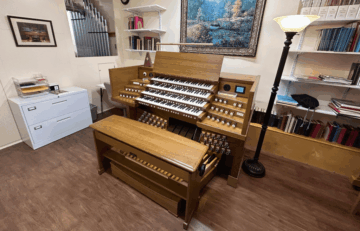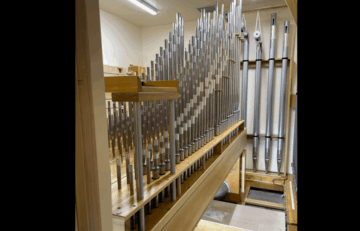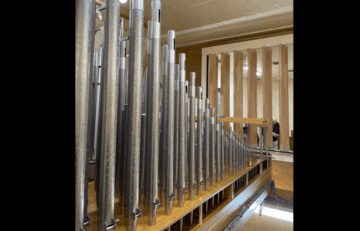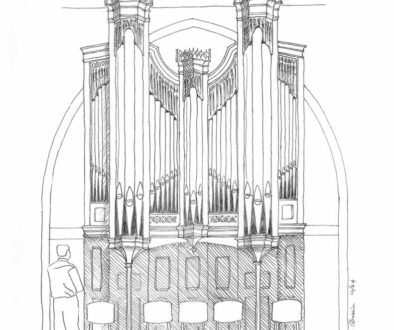The Color Machine
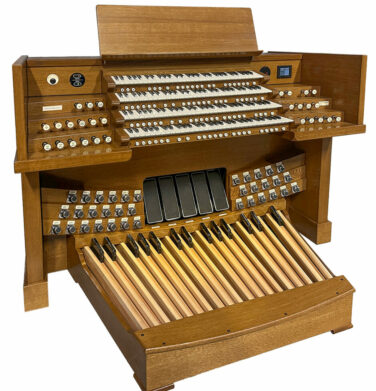
The Color Machine
I’ve been fascinated with practice organ design since my early days as a student. Practice organs carry some of the biggest burden in our profession: they are played constantly, render a huge span of the repertoire, and promote lifelong habits (good or bad) for the student – all in the smallest spaces imaginable! These challenges force builder and client to maximum creativity, resulting in totally different, yet successful, examples of practice organs. When Brigham Young University – Idaho (BYU) asked us to propose a new teaching studio organ, we were instantly excited to take on the challenge.
1. All elements fit the priorities of the organ program
2. Every voice is colorful and additive
3. Every voice is pleasing to the ear for hours at a time
4. No combination of voices is painful to the ear
5. The console is comfortable and practical
6. Mechanical components of the organ are visible for teaching purposes
If all the above points are met, the practice organ will serve students and faculty not just by playing the notes, but by encouraging musicianship. For if students are expected to be musical in performance, they must inject musicianship into every minute of practice.
We began the project by surveying the students and faculty of BYU, asking about their practice habits, other organs on campus, and more. The charge from them was clear: build a practice organ that sounds like a Schoenstein with a console that feels like the Ruffatti organ in Barrus Concert Hall. Thus, we designed the console to copy exactly the keyboards, pistons, toe studs, and expression shoes of the Ruffatti (Rodgers) console.
A four-manual concert hall console paired with eleven voices could easily become burdensome in everyday practice. To combat this, we fitted the console with our Audible Pistons feature and a switch to turn off the combination action. This allows the student to walk into the studio, flip a switch, draw some stops, begin practicing, and hear the pistons “thump” when pressed. (As opposed to having to set myriad pistons of the same registration just to practice pistons changes.)
Tonally, the organ is designed to be a color machine, for both musical interest and to be sure the player can hear (not just feel) when they play on a different manual or registration. The Great, Swell, and Pedal are voiced on three inches pressure for an effortless, singing tone. These divisions have two contrasting foundation pairs and an Oboe. In the Choir and Solo, voiced on four inches, the organist finds a pair of muted strings, Willis-style Lieblich Gedeckt, Viol d’Orchestre (VDO), and Clarinet. The VDO has a tone that’s very energized but not harsh; we are constantly amazed at the ways this stop can be used as solo and ensemble voice.
Upon completion of the organ, the most gratifying experience for all of us was hearing how every stop – without exception – can be heard easily in combination with any and all other stops. We hope this will train the student’s ear to prefer organs that are beautiful and useful, with no wasted energy. And at the risk of metaphorical overextension, we hope the same principle will guide them throughout all their musical endeavors.
We wish to thank Dr. Daniel Kerr, Director of Organ Studies; Jeorgette Requiron, Sourcing Agent; and Kyler Hokanson, Architecture Project Manager. This was one of the smoothest running jobs in recent memory, and these people and their teams are due credit for a successful outcome.
– Bryan Dunnewald, Schoenstein & Co.
Bryan Dunnewald is President and Tonal Director at Schoenstein & Co.
